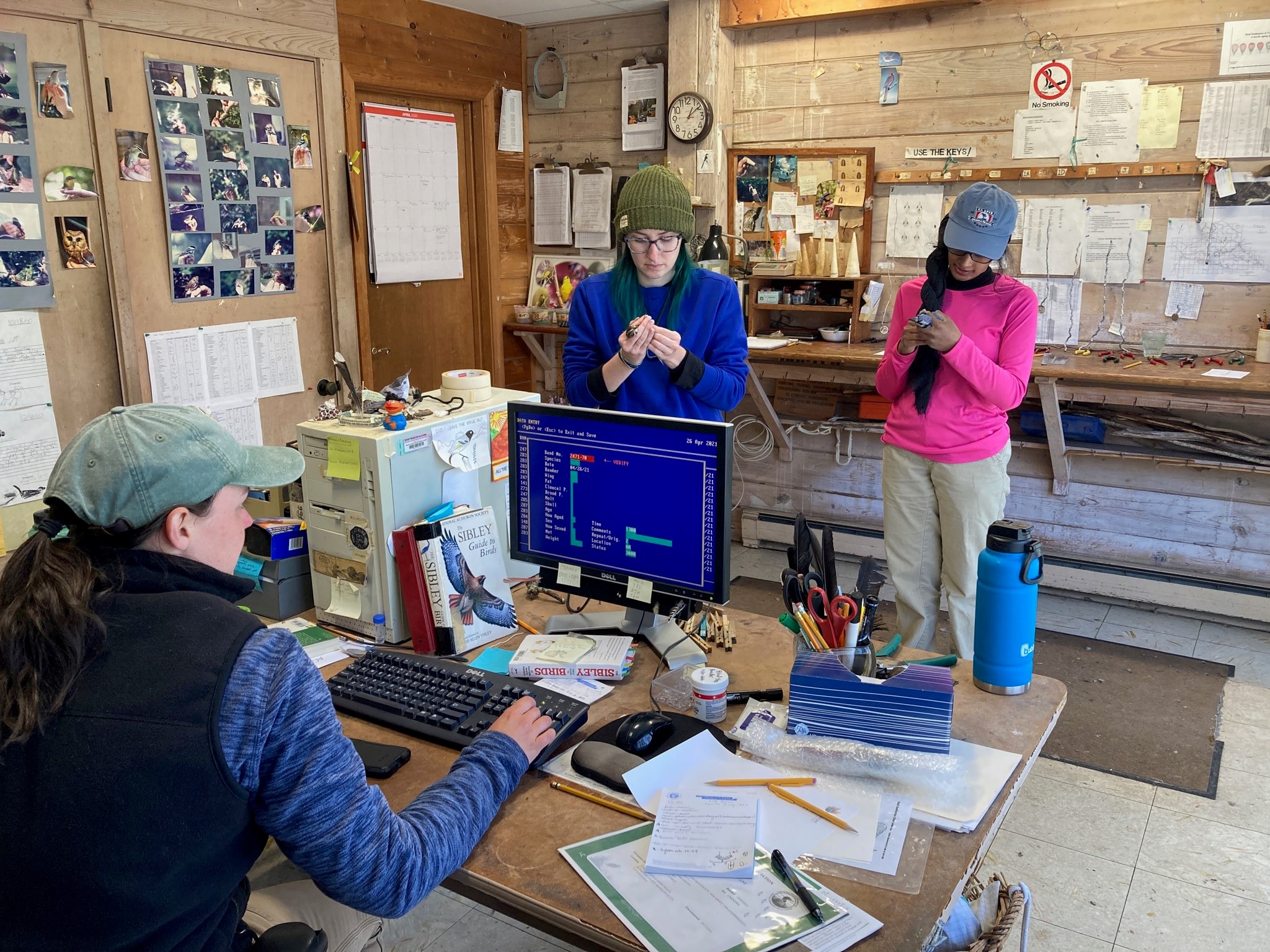Manomet’s bird banding lab opened for spring migration on April 15. Migratory and resident birds have been banded at Manomet since 1966 – a Black-capped Chickadee banded by Manomet’s by Manomet’s Founding Director Kathleen (Betty) Anderson.
Migratory bird banding operations like ours represent an important source of data about bird migration. Long-term ecology data sets can lead to discoveries often missed in shorter-term studies, and are critical for establishing baselines and tracking changes in the natural world. Because birds are widely surveyed by professional and amateur observers alike, and their natural histories are often well-understood, wild bird populations can be useful sentinels of environmental change and ecosystem health.
Joining the banding lab this year are four talented banders from across the U.S. with diverse backgrounds and interests. All of the banders tested negative for COVID-19 before arriving at Manomet’s Plymouth campus and will be following our safety guidelines. Having a full banding staff is crucial for a complete, consistent look at long-term trends. “As one of the first bird observatories in North America, we have a dataset that captures more than 50 years of standardized data about bird migration,” says Trevor Lloyd-Evans, Vice President, Environmental Education and Outreach. “Having a full team keeps the lab running at capacity, capturing as many birds as possible and recording full data.”





 Back to all
Back to all
